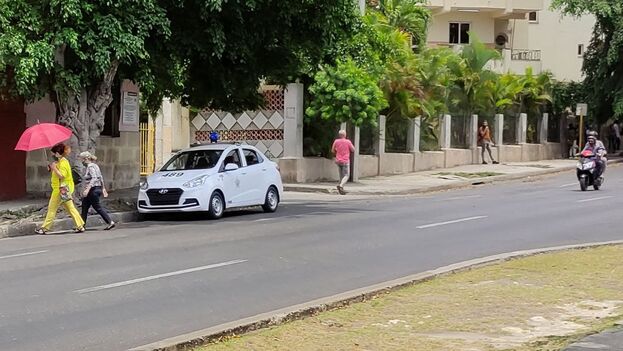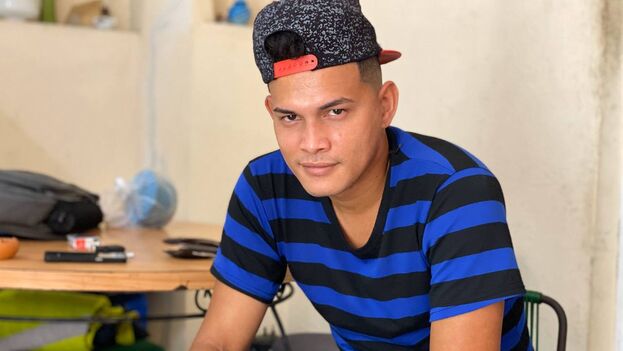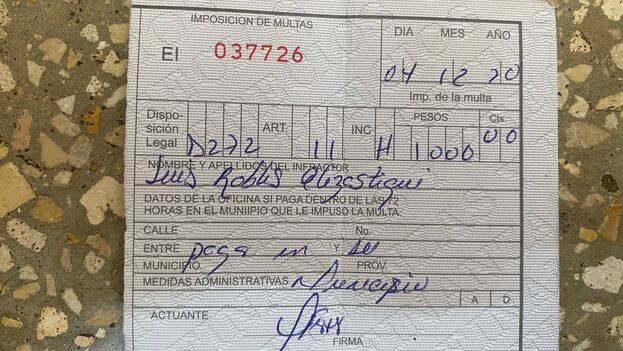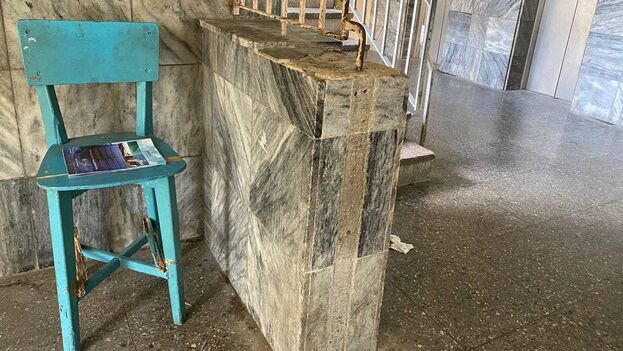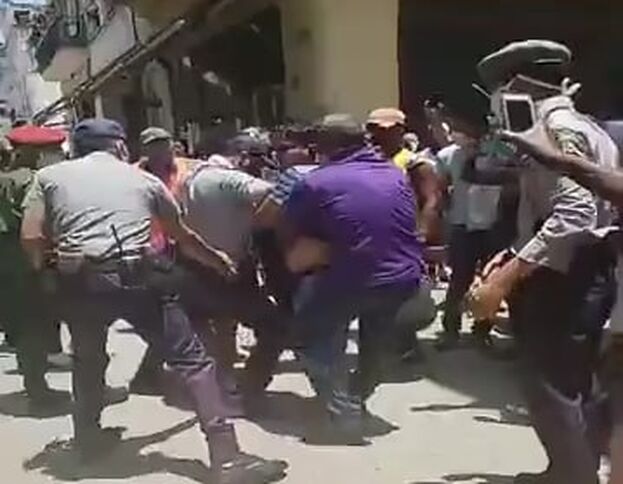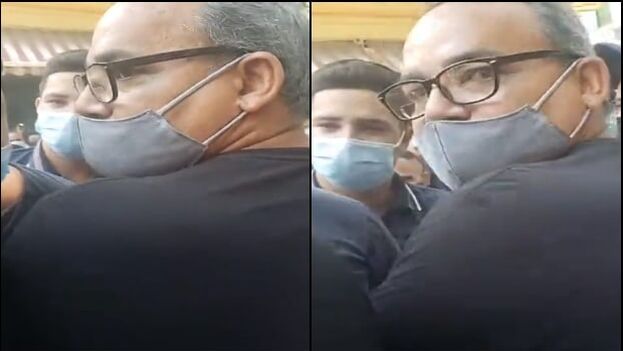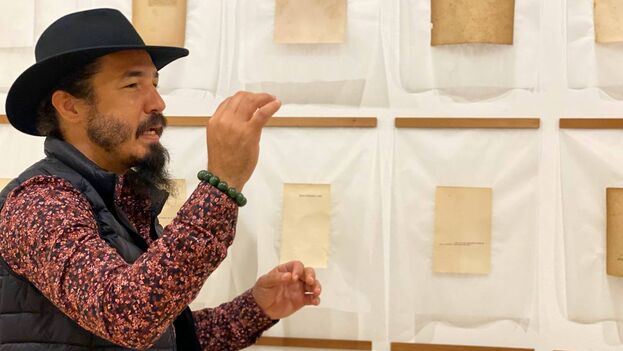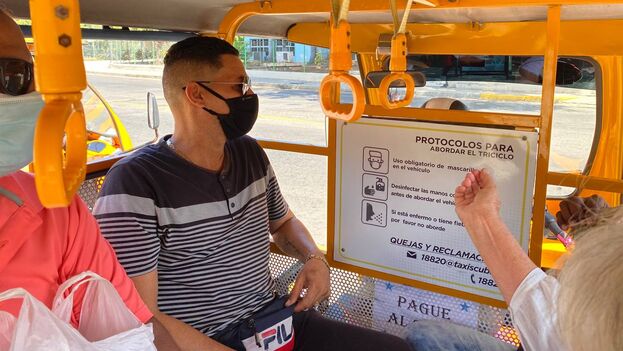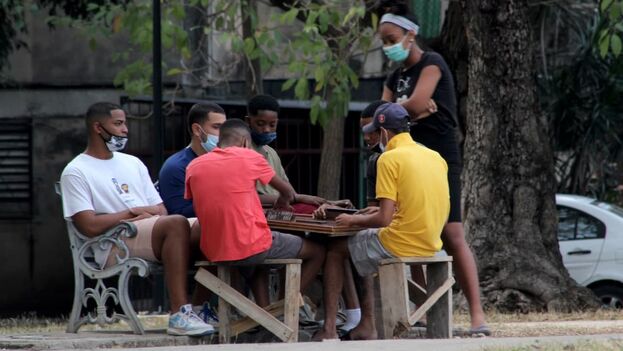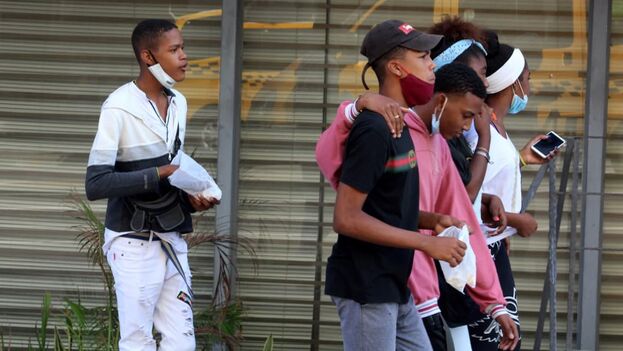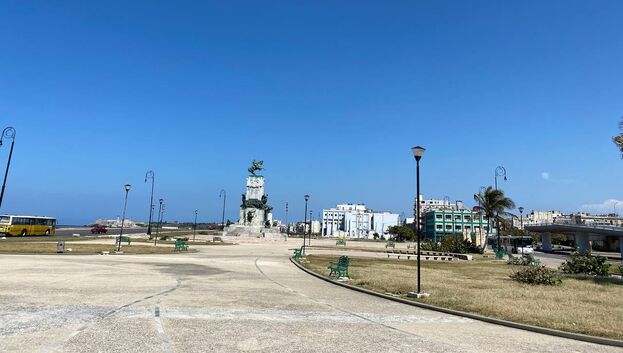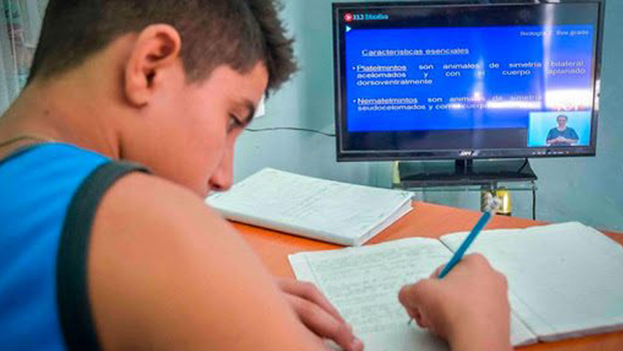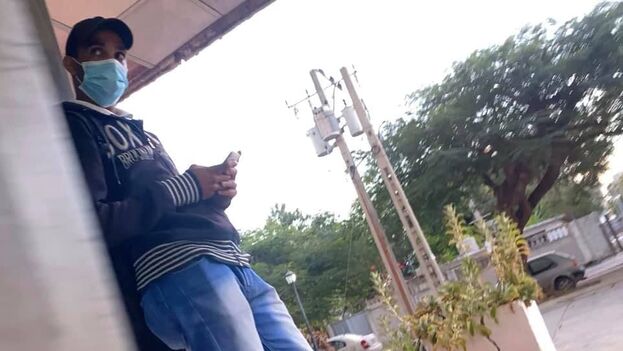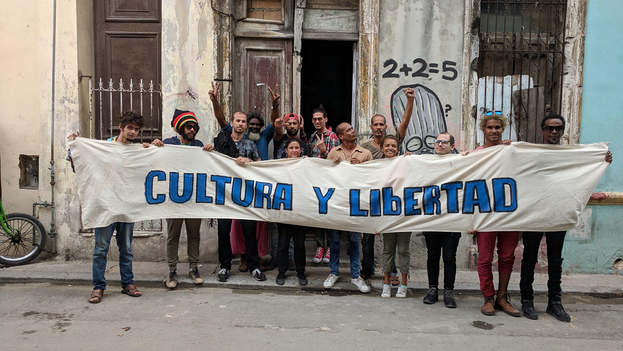
![]() 14ymedio, Luz Escobar, Havana, 22 May 2021 — Since Luis Manuel Otero Alcántara fell into the hands of State Security 20 days ago, the narrative of every second of his existence has been under the power of the Government. Luisma, as his friends call him, likes to turn on his cell phone and go live every time he wants to tell something, he does it without first writing the words that he is going to say, without measuring his gestures, full of life.
14ymedio, Luz Escobar, Havana, 22 May 2021 — Since Luis Manuel Otero Alcántara fell into the hands of State Security 20 days ago, the narrative of every second of his existence has been under the power of the Government. Luisma, as his friends call him, likes to turn on his cell phone and go live every time he wants to tell something, he does it without first writing the words that he is going to say, without measuring his gestures, full of life.
Luisma’s gestures are great, when he speaks, when he raises an arm, when he laughs, when he dances or kisses, when he hugs his friends. He is spontaneous, his eyes have body, his gaze is intense.
Since he was forcibly removed from his house on May 2nd, we have not seen that spontaneity again. The only thing that the powers-that-be that have him kidnapped at Calixto García Hospital has done is to show it through edited images, first on national television, then on Facebook pages that are instruments of State Security. continue reading
According to this version, he has been seen walking into the hospital on his own, guarded by several doctors, talking to his doctor, and walking through a courtyard at Calixto Garcia Hospital. During all this time, he has not had access to his cell phone or to a hospital phone to call his relatives. He has been kidnapped, his friends and colleagues inform us.
In the last video, released last Wednesday night, the artist looked much more physically damaged than in the previous ones. He looked thin, very thin, his hands between his thighs, his laughter was nervous, and a tray full of food on his lap, although he could not be seen eating anything. This was part of a macabre scene that State Security insists on showing before our eyes.
In the last video that was released last Wednesday night, the artist looked much more physically deteriorated than in the previous ones
Those of us who know Luisma know of his overwhelming strength and what we have seen here, although he resembles himself at times, is far from the friend, the creator who is Luis Manuel Otero Alcántara. What are they doing with him? What do they want to accomplish with those videos? What treatment is he receiving that he isn’t already out of the hospital?
His captors say that he is in good health but they do not yet explain why they have him hospitalized. They say that they are complying with what’s established, but they display him without shame, even giving details of his medical files in the official media and lying.
They already tried to take Luis Manuel to jail under the accusation of having committed alleged crimes of outrage to national symbols and damage to property but they could not prove it. They released him after 13 days. On that occasion, the authorities pointed out his disrespect for the flag for his Drapeau performance, in which he proposed to carry, like a second skin, the Cuban flag over his shoulders for a whole month, 24 hours a day. He did not soil the flag, he did not throw it to the ground, he did not “outrage” the national symbol as the authorities claim in their smear campaigns.
At 33 years of age, the artist is the most visible face of the San Isidro Movement (MSI). For this reason, the government’s propaganda apparatus has not stopped campaigning to discredit his image, accusing him of leading a “political manipulation” and of receiving instructions and financial support from abroad.
But the government’s boundary on Alcántara has been tightened even more since last November. The problem is no longer whether he uses national symbols or public space for his performances, now they go into his house, tear off the works that the artist has on the walls and take him away by force. In this violent way it was how they prevented him from continuing with the performance that consisted of being in his living room for eight hours and five days, sitting on a vile garrote, which was also taken from him by the authorities.
This time he was not harassed for making unconventional works of art in public spaces, outside the conventional frameworks of art, such as his actions questioning the removal of a bust of the communist leader Julio Antonio Mella from the ground floor of the luxurious Manzana Kempinski Hotel. This time he has been punished with never-before-seen brutality for doing what is supposed to be art within established limits.
This time he has been punished with never-before-seen brutality for doing what is supposed to be art within established limits
After that arrest, when Alcántara returned home he did nothing but go out every day to demand that the surveillance fence surrounding his home be lifted since November 2020 be lifted, that the confiscated works of art be returned to him or that he be compensated for the damages and that the authorities respect the full exercise of artistic freedom for all creators.
The government not only ignored his demands but also ordered him to be detained every time he went out on the street, until he received death threats from another prisoner in the dungeon. That was why he did not come out anymore to continue demanding his rights.
Alone in his home, completely incommunicado and surrounded by State Security, it was then that the hunger and thirst strike began on April 25th until dawn on May 2nd, when he was taken to Calixto García Hospital against his will.
That is how we got to this point, 20 days in which the only news that has been had from Alcántara is filtered through State Security, a macabre filter that, far from alleviating fears, returns an image that is so disturbing it seems designed solely to instill terror and panic.
Translated by Norma Whiting
____________
COLLABORATE WITH OUR WORK: The 14ymedio team is committed to practicing serious journalism that reflects Cuba’s reality in all its depth. Thank you for joining us on this long journey. We invite you to continue supporting us by becoming a member of 14ymedio now. Together we can continue transforming journalism in Cuba.


